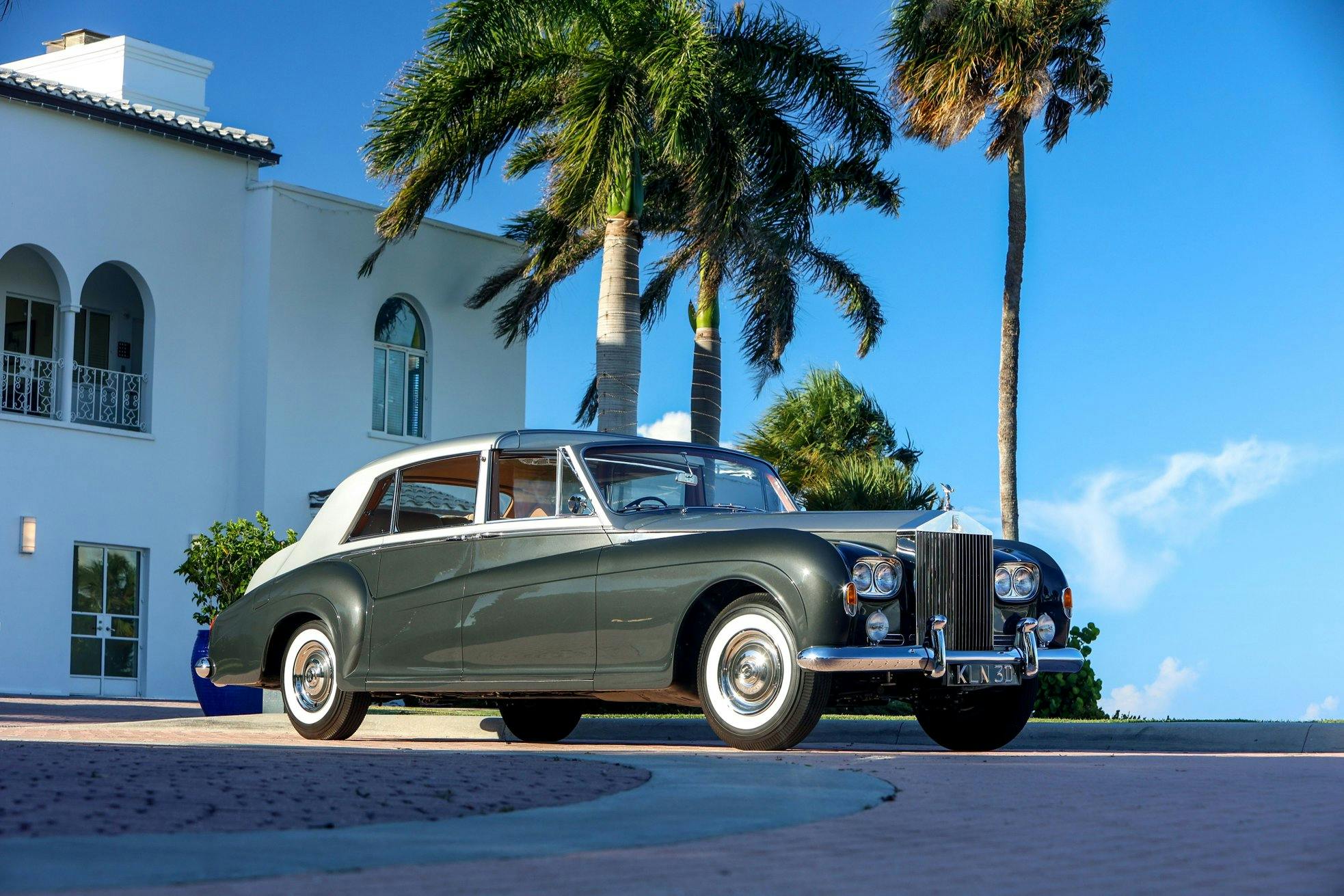Media | Articles
8 rare cars bound for Monterey 2022
When it comes to cars, how do you define “rare?” Thanks to attrition, many collector cars are an unusual sight; however, would we consider a Ford Model T—one of the best-selling cars of all time—to be “rare” because we don’t see them on the road that often? On the other end of the spectrum, some cars are true one-offs. Are they rare, or “unique”? Or something else entirely?
One cannot help but ponder these questions while looking at the upcoming consignments for the 2022 Monterey auctions. A few weeks from now, rarity in all its automotive forms will be up for grabs on the peninsula, including a dozen Mercedes-Benz 500/540Ks (less than a thousand built) and more than two dozen one-of-one specimens.
Coach-built specials, limited-production cars, unusual combinations of options and equipment, last-of-the-breed survivors: It’s all here. And we won’t even start in on racing cars (we’ll preview those separately).
Here are some of the highlights.
Coachbuilt luxury cars—the original exotics
1966 Rolls-Royce Phantom V Sedanca de Ville by James Young
Marketplace
Buy and sell classics with confidence

Any Rolls-Royce, even that $12,000 Silver Spirit you’re eyeing on AutoTrader, starts out as an exclusive, expensive piece of hand-built English goodness. But there have always been models that are a cut above the rest, and from 1959 to ’68 the Phantom V was that model. A huge, three-ton formal car with a 144-inch wheelbase, it was often the ride of monarchs, heads of state, or other bigwigs.
Bigwigs like Nelson Rockefeller, grandson of Standard Oil founder and all-round famous rich guy John D. Rockefeller. Although he was actually the second owner, Rockefeller bought the car just prior to being sworn as Vice President of the United States under Gerald Ford. Coachbuilder James Young fitted the bodywork to the monstrous Phantom, and it is represented as the first of just three cars fitted with this James Young “Sedanca” limousine bodywork, which features a removable roof section over the driver and front passenger. Restored in its original colors of Shell Gray and Black Pearl over tan, it has an estimate of $500,000–$700,000.
1938 Talbot-Lago T150-C SS Teardrop Coupe by Figoni et Falaschi
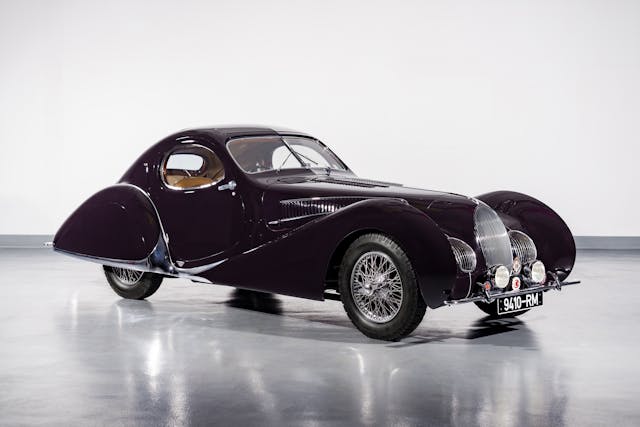
This Talbot-Lago is a potentially eight-figure automobile (estimate of $9M–$11M) partly because the Figoni et Falaschi Teardrop Coupe body style is an Art Deco masterpiece and one of the most famous shapes of its or any era. Famous, and also extremely rare. RM’s car is one of just 11 Teardrop Coupes with the second series “New York” bodywork. It is also represented as the only one commissioned with racing in mind. The original owner was even mad enough to run the rolling sculpture at Le Mans in 1939.
It’s all about the options
1989 Porsche 911 Carrera 3.2 Club Sport
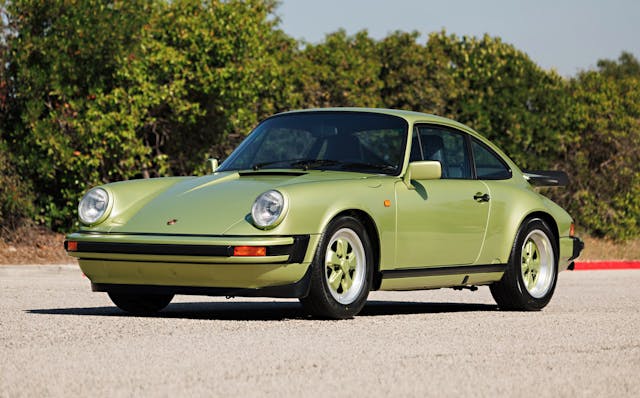
From one perspective, there’s nothing rare about a Porsche 911. The company has built over a million copies of the rear-engined wonder, and they’re still rolling out of the factory gates. Drive around a nice part of town for a few minutes and you’re bound to see one. In certain circles of the car hobby, however, rarity denotes a special combination of trim and/or options, and this 911 certainly qualifies.
It’s a 1989 “M637” Club Sport, a track-inspired model with a hotter engine, enhanced handling, and the deletion of most creature comforts. Only about 100 were built, and this one is believed to be the only one finished in this paint-to-sample Linden Green, first offered on 1972–73 911s. The “Celebration” pattern cloth seats are another very rare (and very ’80s) option that, along with everything else, helps explains the $400,000–$500,000 estimate.
1967 Lamborghini 400 GT Interim

Lamborghini delivered 8405 cars last year, a new record. That’s a long way from the company’s first production model, the 350 GT. Just 120 copies were built from 1964 to 1966. Production doubled for the follow-up 400 GT 2+2, but we’re still talking about fewer than 250 cars from the upstart Italian firm. And in between there was a 400 GT “Interim,” which combined the two-seater body of the 350 with the larger, more powerful 4.0-liter V-12 of the 400.
This is one just 23 of those Interim cars, and it sold new to actor David Janssen, best known for the TV show The Fugitive.
1958 Ferrari 250 GT Cabriolet Series I by Pinin Farina
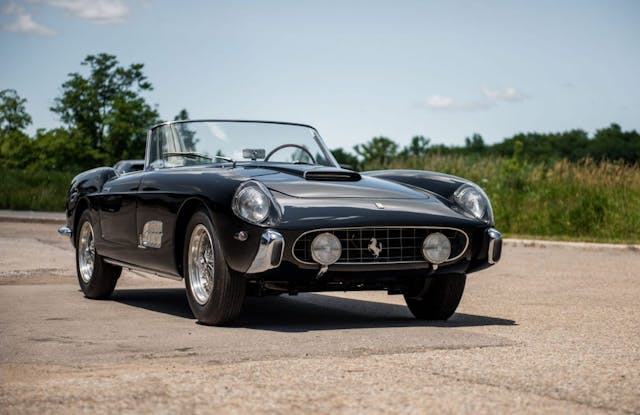
The Pinin Farina-bodied 250 GT cabriolet was an important step for Ferrari. Important in that the company was starting to build its road cars in more standardized, series production like a more serious automaker. But these are still small numbers we’re talking about, and there were changes and subtle differences along the way. For example, only about 40 of the Series I Cabriolets were built before a more standardized version, of which about 200 were built, replaced it. And out of those Series I cars, just five got covered headlamps, 410 Superamerica–style side vents, and bumperettes—considered the most desirable three-part combination.
This car is one of those five, sold new to preferred Ferrari customer Count Giovanni Volpi and shown at the Paris Motor Show. Restored in 2001, it has a presale estimate of $6,000,000–$7,000,000.
1949 Ferrari 166 Inter Cabriolet by Stabilimenti Farina
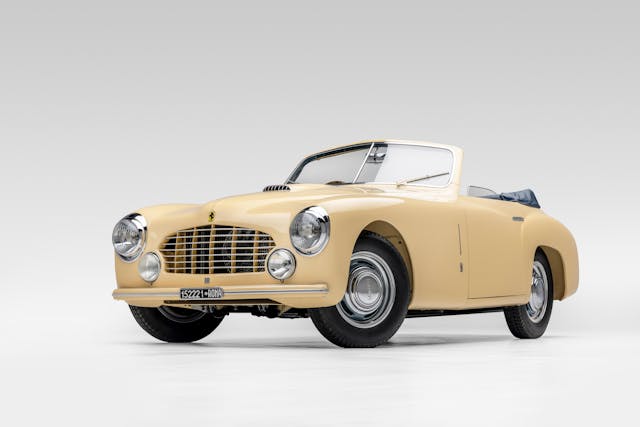
Road cars simply weren’t a priority in Ferrari’s early days. Production was low-volume, no two cars were exactly alike, and Ferraris for the road were inextricably linked to the company’s racing machinery. The 166 Inter, for example, was essentially a road-going version of the 166 S and 166 MM that were so successful in sports car racing during 1948–49. Just 38 Inters were built, and this is reportedly one of just three with this cabriolet bodywork by Carrozzeria Stabilimenti Farina. That already makes it a car to watch, but special features like the early prancing horse emblem on the nose, huge chronograph on the glovebox door, right-hand drive (to more safely drive in the Alps, apparently) and the very non-Ferrari colors of Avorio Antico (Antique Ivory) over blue make it even more interesting.
Esoterica
1914 Haynes Model 27 50 HP Touring
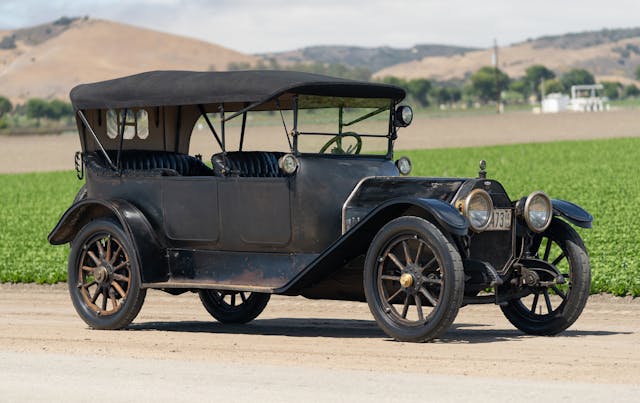
Remember the Haynes? Don’t worry, few people do. Not to be confused with the popular repair manuals, the Haynes Automobile Company built motorcars in Indiana during the early twentieth century. By 1925, it had joined the list of hundreds of defunct American carmakers. This Haynes Touring was purchased new in Iowa and 108 years later it is remarkably original. It has even been shown in the Preservation Class at Pebble Beach.
According to Gooding & Company, it is one of two Haynes Model 27 Tourings believed to exist. Here’s where we’ll note that rare doesn’t mean a car has to be particularly expensive (the Haynes’s $100K estimate is on the low end for a Monterey run list). In this case it’s a somewhat ordinary car with a low production number and a low survival rate. It’s rare, and remarkable, because it has survived this long.
1971 Mercedes-Benz 600 LWB Landaulet

Kim Il-Sung, Chairman Mao, Ferdinand Marcos, and Saddam Hussein all stretched their autocratic legs in the back of a Mercedes-Benz 600, the world’s most expensive automobile when it was new. If that’s not enough of an endorsement, we’ll add that they’re rare.
A few weeks ago, a 600 Pullman (the long wheelbase model) used by the leadership of Gabon was offered at auction, but it failed to meet reserve at a €240,000 high bid.
Here’s another 600 that, to put it politely, is ex-government service. It’s also quite a bit rarer, and more lavishly equipped. A total of 2677 of these “Grosser Mercedes” were built, but most of these were the standard sedans. The Pullman limousines totaled 429, while 59 were Pullman landaulets (essentially a limousine with a retractable rear section of the roof). And just 26 of those were six-door landaulets. This is one of them, ordered new in 1971 from the Democratic Republic of Congo (renamed Zaire later that year) with the customer listed as Staatapräsident Mobutu, aka the DRC’s president Mobutu Sese Seko, who led the country from 1965 to 1997.
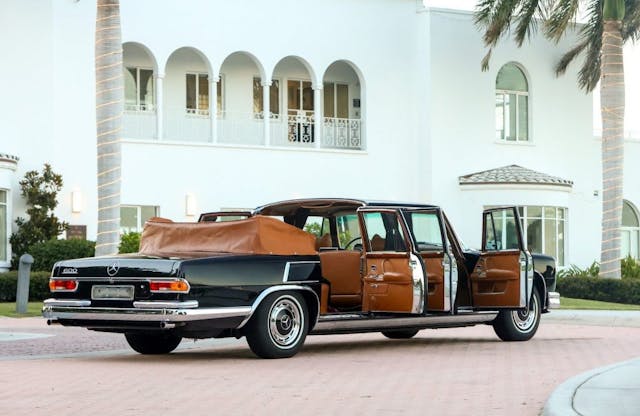
A glass division with intercom, heat-insulating glass, fire extinguisher, radio remote control system in rear, tape recorder with microphone and connection to the Becker Grand Prix TR radio, two separate loudspeaker systems with 14 speakers, rear armrest with cosmetic case and Braun electric razor, and a Sony television are all on the features list.
The African leader used the mile-long Mercedes in parades and public events until the mid-1980s, when Mobutu swapped it for a Cadillac limo. In 2016, it was completely restored—not an easy feat for a car that shares few parts with other Mercedes-Benz models and one that has both air suspension and a special hydraulic system that operates most of the car’s many power features. It has an estimate of $2,000,000—$2,500,000.
Are you planning to attend Monterey Car Week? Keep up to date on the latest news and events by subscribing to our special edition newsletter or text Pebble22 to 227588 (CAR LUV) for real-time event updates straight to your phone.
*Hagerty has entered into a joint venture with Broad Arrow Group. You can read more about it here.










